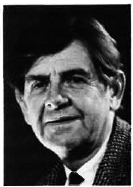- Volume 59 , Number 1
- Page: 127–8
Alexander Graham Weddell, M. D., D. Sc. 1908-1990

Graham Weddell, Emeritus Professor of Human Anatomy at Oxford, and an Emeritus Fellow of Oriel College, died on 21 March 1990 at the age of 82. Educated at Cheltenham and St. Bartholomew's Hospital, where he qualified in medicine in 1933, he set out immediately on an academic career in anatomy. Weddell joined Professor Woolland at Barts as demonstrator in anatomy in 1933, re-joining him in 1937 at University College, London, having spent two years as a Commonwealth Fund Fellow in neuro-anatomy/surgery at Washington University. During this period he obtained the London M. D. and D. Sc. degrees. At the outbreak of war in 1939, he joined the Royal Army Medical Corps, was seconded to the neuro-surgical unit at Oxford under Sir Hugh Cairns, and later to do anatomical research for the Royal Navy Personnel Committee of the Medical Research Council. His time under Sir Hugh Cairns may well have inspired him to take up his first post-war appointment in 1947 with the Department of Human Anatomy at Oxford as demonstrator, then reader, and finally professor in 1973.
Over a period of some 30 years until his retirement in 1975, the Department of Anatomy at Oxford was recognized internationally as a center of repute in the important field of damage and subsequent regeneration of peripheral mammalian nerves. Much of these achievements resulted from the virtuosic ability of Weddell in applying the best currently available light- and election-microscopic techniques in attempting to define nerve sensation on an anatomical basis. In fact, Weddell was one of the first to pioneer the use of electron microscopy for studying nerve damage. His achievements in the field of anatomy were duly acknowledged in his appointment as President of the Anatomical Society (1973-1975), having been a member of their committee and editorial board.
Fortunately, even by the early 1950s Robert Cochrane (the then doyen of British leprosy), with his usual foresight, appreciated the potential importance of Weddell's work on human peripheral nerves to leprosy neuritis. Leprosy patients as well as all of us in the field of leprosy research have benefited from Weddell's immediate and enthusiastic acceptance of Cochrane's challenge, and for the next 25 years he gave a major proportion of his team's work and his own life to leprosy. In particular, his expertise as a neuro-anatomist and his knowledge of neural structural changes, including ultrastructural studies, as applied to leprosy lesions in man and experimental leprosy lesions in animals, have added significantly to our understand ing of the mechanism of nerve damage and host response to infection.
While Weddell's scientific contributions, based always on technical skills of the highest order, are of no mean achievement, they represent only part of his makeup which contributed to his achievements, and brushed off on all who worked with him. He had an inborn belief in being responsible for sharing and teaching all his relevant knowledge to others. This he provided in Oxford to all students, staff, and visiting workers, as well as to those overseas during his many visits to leprosy-endemic countries. This was of particular benefit for centers wishing to set up electron-microscopy facilities, since Weddell was also able to assemble and service electron microscopes.
Weddell was endowed with an engaging and infectious sense of humor and was also an untiring raconteur. These gifts, combined with generous entertaining and dining at Oriel College or by his wife Barbara at their home or in the garden of their delightful 14th-century house in Oxford, will be greatly missed but never forgotten by any of us who were privileged to share in these occasions.
- R. J. W. Rees